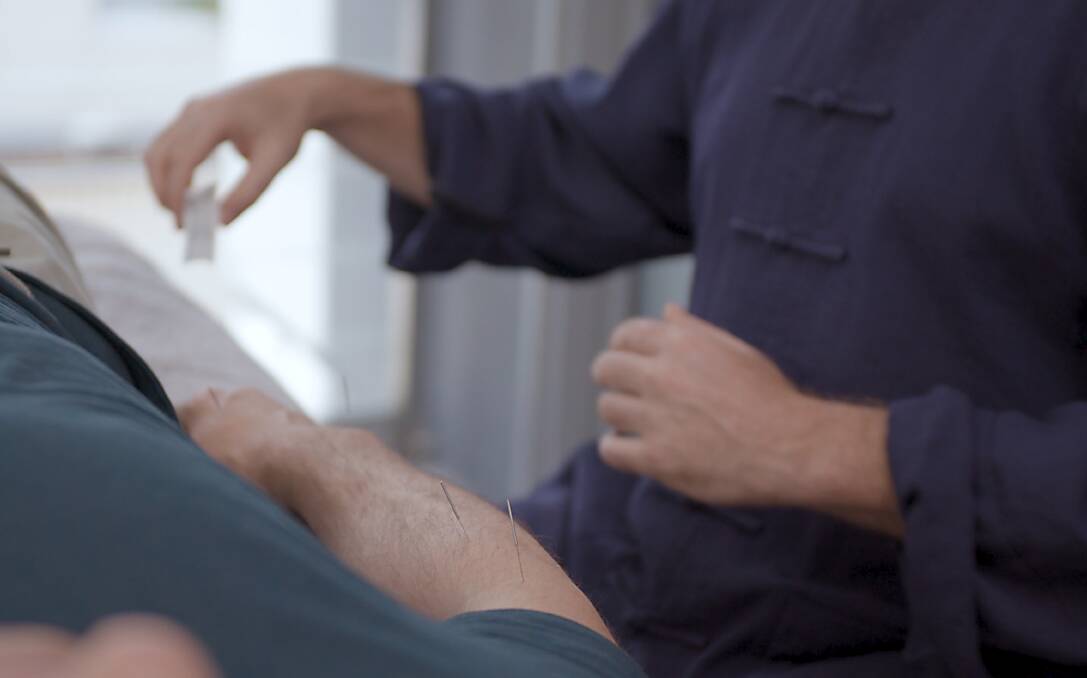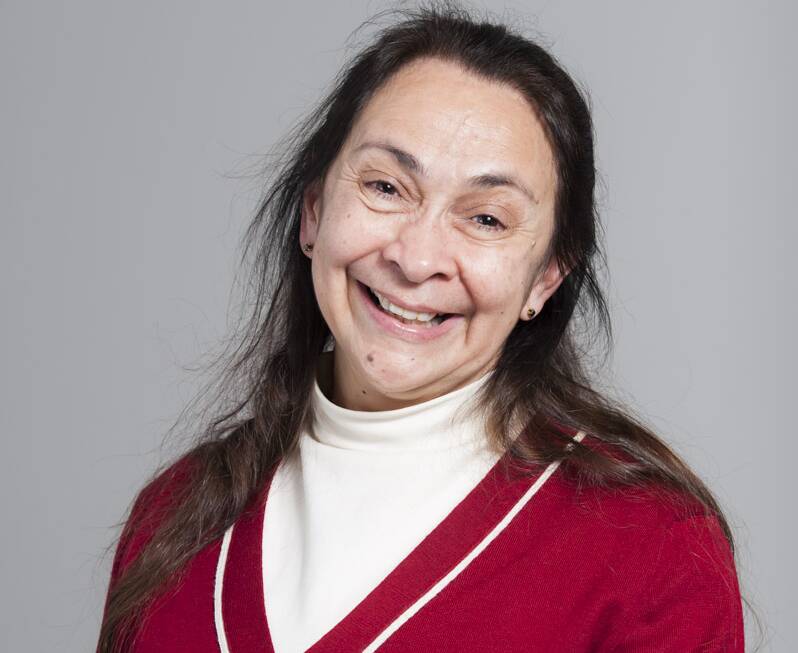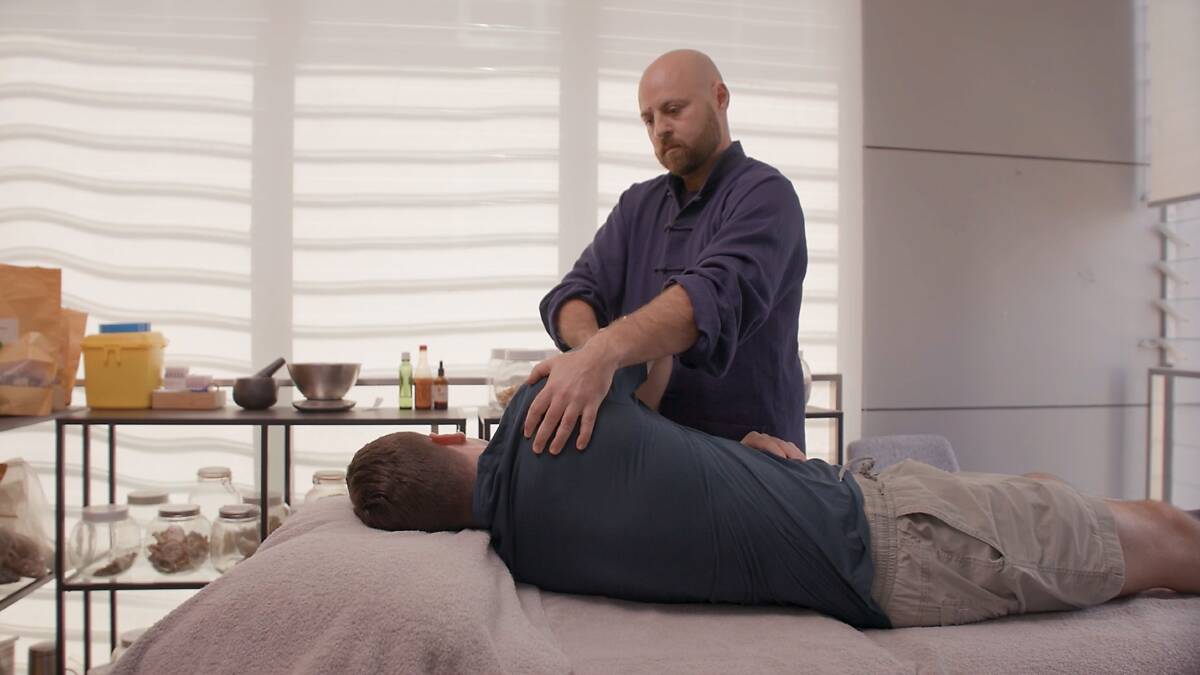Relieving back pain a key mission as Chinese medicine association turns 50

This is branded content for the Australian Acupuncture and Chinese Medicine Association.
The moment back in 1980 when Waveny Holland discovered the power of acupuncture to relieve her back pain was a life changing one for her.
Sixteen-weeks pregnant with her second child, the registered nurse and midwife was having her very first acupuncture treatment after hurting her back in the simplest of ways - leaning over a basin to wash her hands.
"It sounded like a whip had cracked," she said. "I couldn't straighten up, I couldn't do anything."
Hunched over and in pain, Dr Holland went to see her GP who had also trained in traditional Chinese medicine, including acupuncture, in China.
"I got off that table [after the acupuncture] and I was able to stand, and I instantly thought, 'I need to know this' because what I experienced and thought after the treatment was it was absolutely transformational in the immediate reduction in pain and improvement in function," she says.
"My instant thought was 'I need to know this.'
"It was not just knowing more about, it was actually knowing Chinese medicine - the philosophy, treatments, practice, techniques the whole this."
In that moment, the Brisbane-based Dr Holland decided to train in Traditional Chinese Medicine (TCM). Today she's one of Australia's most highly-qualified and experienced acupuncturists and Chinese medicine practitioners, a leading advocate for the industry and the president of the sector's peak industry body, the Australian Acupuncture and Chinese Medicine Association (AACMA).
This year celebrating its 50th anniversary, AACMA's formation began in Brisbane by a group of six dedicated TCM practitioners who wanted to ensure the quality of the treatment provided by industry by boosting the availability of high standard education and training, and elevating TCM to registered professional status in Australia.
"There was very little available at that time and they wanted to make sure that education was very good and based on a deep foundation and understanding of the philosophy and practice of Chinese medicine," said Dr Holland.

Exclusively representing Chinese medicine practitioners, AACMA today has more than 2200 members, just under 50 per cent of all registered practitioners, and continues to be at the forefront of advocating for the sector, raising awareness about Chinese medicine, and working to maintain strict and high standards of practice, giving peace of mind to consumers seeking treatment.
In its early days, AACMA introduced accreditation standards for its members, and in 2012 played a leading role in securing national registration for the profession. Practitioners are now regulated by the Chinese Medicine Board of Australia.
'Acupuncturist' and 'Chinese Medicine Practitioner' are also now protected titles for registered acupuncturists - a bachelor's degree of four years including up to 1000 hours of clinical practice in related fields is the minimum requirement for registration in Australia. A high quality standard of training ensures public safety especially when compared with just a weekend course for someone who does dry needling.
With the arrival of GST, AACMA lobbied the Government to remove the tax from TCM treatments, and later was also successful in persuading private health funds to include TCM treatments in their cover. One of its big goals now is to have TCM included under Medicare.
"When the GST was taken off and then the private health funds came on board that meant TCM treatments were more accessible to more people," said Dr Holland.
"We didn't have a very big profile in Australia at that stage but it didn't take long before people realised the benefits and word of mouth took off. People loved that we were able to help them maintain their health and wellbeing."
Today, TCM therapies, including acupuncture, Chinese herbal medicine and remedial massage therapies, are quickly emerging as a go-to medicine in Australia. In 2019 there were more than 10 million TCM treatments performed.
Globally, there is increasing recognition of the benefits offered by the ancient traditional therapies to keep people healthy and pain free.
"Our patients love coming to us because there's always a benefit, they always leave feeling better than when they came," said Dr Holland.
"I think people are tired of pharmaceuticals and having to be on medication or whatever. This is a way to break that."

One of AACMA's key missions now is to continue highlighting research documenting the effectiveness of TCM, particularly in pain management, both acute and chronic, and especially back pain.
Dr Holland is a member of the international collaboration One Voice Big Evidence project that's working with the World Health Organisation International Classification of Diseases-11 Code to create an evidence databank on the Chinese medicine treatment of back pain.
"It started off that we were going to get 10,000 case studies on low back pain but it's going to be many more than that now," said Dr Holland.
"TCM does pain splendidly and back pain is global, universal - everyone over a certain age has a sore back at some point.
"With this work we're gently and surreptitiously saying that evidence is showing that this works for back pain so using it to treat other types of pain could also prove beneficial," she said.
"As a practitioner, you can see the joy - it's just the most wonderful thing when you see someone who doesn't have the pain anymore."
This is branded content for the Australian Acupuncture and Chinese Medicine Association.


